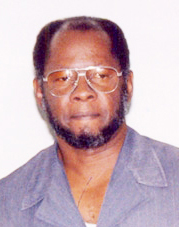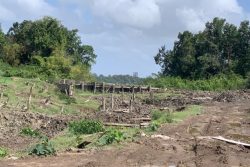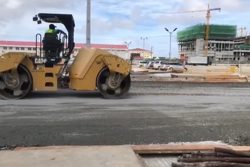Retired Head of the Guyana Geology and Mines Commission (GGMC) William Woolford yesterday said that government ought to pioneer alternative recovery systems for gold because miners would be reluctant to invest in the technology unless it has been proven.
He was speaking at the second of three presentations on ‘Mining Policy Initiatives’ sponsored by the Guyana Gold and Diamond Miners Association (GGDMA) at the Sea Breeze Hotel last evening. The mining industry and its issues have been under the spotlight recently for various reasons, including an impending US ban on the export of mercury which is used by the majority of local miners to recover gold and a moratorium on river mining which has since been lifted. Miners have won assurances from the authorities that there would be no bans on river mining or on the use of mercury.

In his presentation yesterday, Woolford underscored the importance of the industry to the Guyanese economy. He noted the huge costs that miners incur to invest in equipment and in focusing on river mining, said that stopping this would be akin to a person purchasing a five storey building for a hardware store, bringing in merchandise and people and six months later, the person is told that they can no longer have a hardware store in the area. “We’re talking about major investment that is business investment,” he said while noting that according to his information, there are about 250 excavators in operation out of about between 1000 to 1200 mining operations.
Woolford noted the multi-million costs associated with investing in equipment and pointed out that in the majority of cases, the miners do not have the support of the commercial banks. He said that policy changes can affect the industry in ways that would spell disaster. “The industry is heavily capitalized…and there is a lot of money out there and a lot of people would have anxious moments if anything was to go wrong,” he said.
Woolford noted the low recovery rate that currently obtains in the mining industry and said that their needs to be some incentive to get better recovery rates. Policies need to be framed to provide this type of support, he said. The retired GGMC commissioner said that if one is able to buy a dredge for $40 million, it would not be unreasonable to assume that the person can purchase a recovery system for $20 million or more but he also pointed out that no one wants to be the first to try out new technology and find out whether it is working.
He said that in other countries, government systems are used as “guinea pigs” to test out new systems while underscoring the need for local miners to move from a 40% recovery rate to 80% and above. He said that the equipment suppliers ought to be in the forefront of providing the support while there is also a role for the authorities in providing support to the industry.
Woolford also said that implementing this technology will not happen in the short term but those dealing with policy should have a short to medium term view of implementing this. “It is not enough to leave it to the miners,” he said adding that an education and awareness plan would take about two to three years. Woolford also noted the link between better recovery systems and land closure plans.





